NEW YORK BRIDGES
New York has eight-long span suspension bridges, two steel arch bridges, two cantilever bridges and two cable stay bridges. Although many other cities are closely identified with one or more of their bridges, New York stands apart for its sheer number and variety of distinguished long span bridges. As both a bridge fan and photographer, I offer my thoughts on appreciating and photographing a few of New York’s most impressive bridges.
I begin with quite possibly the most famous bridge in the world: the Brooklyn Bridge. What is the secret of the Brooklyn Bridge’s hold on the popular imagination? Although the bridge is similar to many other traditional suspension bridges, it contains two distinct elements that set it apart. The massive stone towers often have been compared to the walls of a gothic cathedral. And the vertical and diagonal suspender cables suggest a spider web. The spider web in the cathedral: this is the secret of Brooklyn Bridge’s visual splendor.
In general, the visual appeal of a suspension bridge is the dialectic between strength (the towers) and lightness (the cables). The Brooklyn Bridge’s unique combination of cathedral-like stone towers and its web-like suspender cables is the most beautiful manifestation of this dialectic of strength and lightness.
Although the Brooklyn Bridge is one of the most photographed objects on earth, its unique visual power somehow resists banality. The challenge for the photographer is to capture a striking and original image of this familiar structure. I firmly believe that this is still possible.
The Manhattan Bridge is located just a half-mile to the east of the Brooklyn Bridge. Although the Manhattan Bridge shares little of the majesty of its more famous sibling, the visual possibilities offered by the bridge are in some ways superior to those of the Brooklyn Bridge itself. How is this possible? The answer is that the Manhattan Bridge walkway serves as the perfect observation point in which to view the Brooklyn Bridge against the Manhattan skyline and against the Statue of Liberty. These views probably offer the single best perspective of these New York landmarks that is available to the general public.
Viewed from the Manhattan Bridge walkway, the Statue of Liberty happens to align with the roadway and suspender cables of the Brooklyn Bridge. The Statue of Liberty is literally caught in the web of the Brooklyn Bridge. That juxtaposition captures in one shot two of America’s most famous and distinctive architectural landmarks and cultural symbols. It is surprising that this particular juxtaposition is not more widely known and photographed.
The Verrazano Bridge was completed in 1964. It is the last great work of the distinguished bridge architect Othmar Ammann and of “master builder” Robert Moses. It is an exemplar of sleek modernism and an embodiment of the power of America in the mid-twentieth century.
Mid-twentieth century bridges were generally built for motor vehicles only – unlike most bridges that were constructed prior to the Second World War. Accordingly, the Verrazano Bridge contains no pedestrian walkway. The Verrazano’s design oversight is, of course, emblematic of a country that at mid-century ignored environmental concerns and pursued economic expansion at all costs. Not incidentally, the same design oversight robs the bridge of a capacity for visual appreciation that can only be derived from a leisurely stroll at two miles per hour rather than a frantic drive at ten to thirty times that speed.
But at least on one day of the year a full visual appreciation of the Verrazano’s splendors can be had: Marathon Day. To gain this unique perspective, I “participated” in the Marathon – or at least the first two miles of it. I shall never forget the tidal wave of humanity – over 50,000 runners – that crossed the bridge on Marathon Day. And I also shall never forget the sensory experience of what the bridge was like when all the marathon runners had departed – and I alone was left to wonder the empty bridge.
Much less well known than any of the bridges discussed above is the Hell Gate Railroad Bridge. This is a massive four-track structure that connects the Bronx and Queens over a five-mile trestle. Completed in 1917, the Hell Gate Bridge is the last great urban bridge structure built by a private railroad. It allowed the mighty Pennsylvania Railroad to run through trains between Boston and Washington via Manhattan. Today the only passenger trains using the bridge are operated by Amtrak.
The steel arch of the Hell Gate is the twin of the Sydney Harbor Bridge – the national symbol of Australia. But in New York few people are even aware of the Hell Gate Bridge.
The steel arch of the Hell Gate contains a walkway (which is not open to the public). The views from the Hell Gate walkway of the nearby RFK Bridge and of the Manhattan skyline are impressive enough. But because the walkway itself has the geometry of a roller coaster, the views from the walkway seem far more playful and whimsical than one might otherwise expect from this gargantuan and powerful structure.
The Kosciusko is New York’s newest long span bridge. The bridge was opened to traffic in 2017 (replacing a truss bridge that dated from 1939) It is a cable stay bridge that carries the Brooklyn-Queens Expressway from, well, Brooklyn to Queens. The bridge crosses the Newtown Creek -- a tributary of the East River that separates a portion of Brooklyn and Queens.
The cable stay bridge is a relatively new bridge design that is a variation of the traditional suspension bridge. The cable stay design revives one of the Brooklyn Bridge’s distinctive (but seldom copied) design features: diagonal stays. But the cable stay design omits the parabolic main suspender cable that is a dominant feature of traditional suspension bridges. Cable stays radiate from a single tower -- unlike a traditional suspension bridge in which the cables are strung between two towers. The effect captures the lightness of traditional suspension bridges but without the power and anchoring effect of the twin towers of traditional suspension bridges
The Kosciusko’s greatest visual asset is the view to the west. From the walkway we see the Manhattan skyline looming in the background and -- in the foreground -- the vast cemeteries of Queens. The skyscrapers of Manhattan loom over tens of thousands of cemetery headstones -- and the shape of the skyscrapers appear to mimic the shape of the headstones. The overall effect is one of a vast city of the dead – a literal Necropolis.
***
I begin with quite possibly the most famous bridge in the world: the Brooklyn Bridge. What is the secret of the Brooklyn Bridge’s hold on the popular imagination? Although the bridge is similar to many other traditional suspension bridges, it contains two distinct elements that set it apart. The massive stone towers often have been compared to the walls of a gothic cathedral. And the vertical and diagonal suspender cables suggest a spider web. The spider web in the cathedral: this is the secret of Brooklyn Bridge’s visual splendor.
In general, the visual appeal of a suspension bridge is the dialectic between strength (the towers) and lightness (the cables). The Brooklyn Bridge’s unique combination of cathedral-like stone towers and its web-like suspender cables is the most beautiful manifestation of this dialectic of strength and lightness.
Although the Brooklyn Bridge is one of the most photographed objects on earth, its unique visual power somehow resists banality. The challenge for the photographer is to capture a striking and original image of this familiar structure. I firmly believe that this is still possible.
***
The Manhattan Bridge is located just a half-mile to the east of the Brooklyn Bridge. Although the Manhattan Bridge shares little of the majesty of its more famous sibling, the visual possibilities offered by the bridge are in some ways superior to those of the Brooklyn Bridge itself. How is this possible? The answer is that the Manhattan Bridge walkway serves as the perfect observation point in which to view the Brooklyn Bridge against the Manhattan skyline and against the Statue of Liberty. These views probably offer the single best perspective of these New York landmarks that is available to the general public.
Viewed from the Manhattan Bridge walkway, the Statue of Liberty happens to align with the roadway and suspender cables of the Brooklyn Bridge. The Statue of Liberty is literally caught in the web of the Brooklyn Bridge. That juxtaposition captures in one shot two of America’s most famous and distinctive architectural landmarks and cultural symbols. It is surprising that this particular juxtaposition is not more widely known and photographed.
***
The Verrazano Bridge was completed in 1964. It is the last great work of the distinguished bridge architect Othmar Ammann and of “master builder” Robert Moses. It is an exemplar of sleek modernism and an embodiment of the power of America in the mid-twentieth century.
Mid-twentieth century bridges were generally built for motor vehicles only – unlike most bridges that were constructed prior to the Second World War. Accordingly, the Verrazano Bridge contains no pedestrian walkway. The Verrazano’s design oversight is, of course, emblematic of a country that at mid-century ignored environmental concerns and pursued economic expansion at all costs. Not incidentally, the same design oversight robs the bridge of a capacity for visual appreciation that can only be derived from a leisurely stroll at two miles per hour rather than a frantic drive at ten to thirty times that speed.
But at least on one day of the year a full visual appreciation of the Verrazano’s splendors can be had: Marathon Day. To gain this unique perspective, I “participated” in the Marathon – or at least the first two miles of it. I shall never forget the tidal wave of humanity – over 50,000 runners – that crossed the bridge on Marathon Day. And I also shall never forget the sensory experience of what the bridge was like when all the marathon runners had departed – and I alone was left to wonder the empty bridge.
***
Much less well known than any of the bridges discussed above is the Hell Gate Railroad Bridge. This is a massive four-track structure that connects the Bronx and Queens over a five-mile trestle. Completed in 1917, the Hell Gate Bridge is the last great urban bridge structure built by a private railroad. It allowed the mighty Pennsylvania Railroad to run through trains between Boston and Washington via Manhattan. Today the only passenger trains using the bridge are operated by Amtrak.
The steel arch of the Hell Gate is the twin of the Sydney Harbor Bridge – the national symbol of Australia. But in New York few people are even aware of the Hell Gate Bridge.
The steel arch of the Hell Gate contains a walkway (which is not open to the public). The views from the Hell Gate walkway of the nearby RFK Bridge and of the Manhattan skyline are impressive enough. But because the walkway itself has the geometry of a roller coaster, the views from the walkway seem far more playful and whimsical than one might otherwise expect from this gargantuan and powerful structure.
***
The Kosciusko is New York’s newest long span bridge. The bridge was opened to traffic in 2017 (replacing a truss bridge that dated from 1939) It is a cable stay bridge that carries the Brooklyn-Queens Expressway from, well, Brooklyn to Queens. The bridge crosses the Newtown Creek -- a tributary of the East River that separates a portion of Brooklyn and Queens.
The cable stay bridge is a relatively new bridge design that is a variation of the traditional suspension bridge. The cable stay design revives one of the Brooklyn Bridge’s distinctive (but seldom copied) design features: diagonal stays. But the cable stay design omits the parabolic main suspender cable that is a dominant feature of traditional suspension bridges. Cable stays radiate from a single tower -- unlike a traditional suspension bridge in which the cables are strung between two towers. The effect captures the lightness of traditional suspension bridges but without the power and anchoring effect of the twin towers of traditional suspension bridges
The Kosciusko’s greatest visual asset is the view to the west. From the walkway we see the Manhattan skyline looming in the background and -- in the foreground -- the vast cemeteries of Queens. The skyscrapers of Manhattan loom over tens of thousands of cemetery headstones -- and the shape of the skyscrapers appear to mimic the shape of the headstones. The overall effect is one of a vast city of the dead – a literal Necropolis.
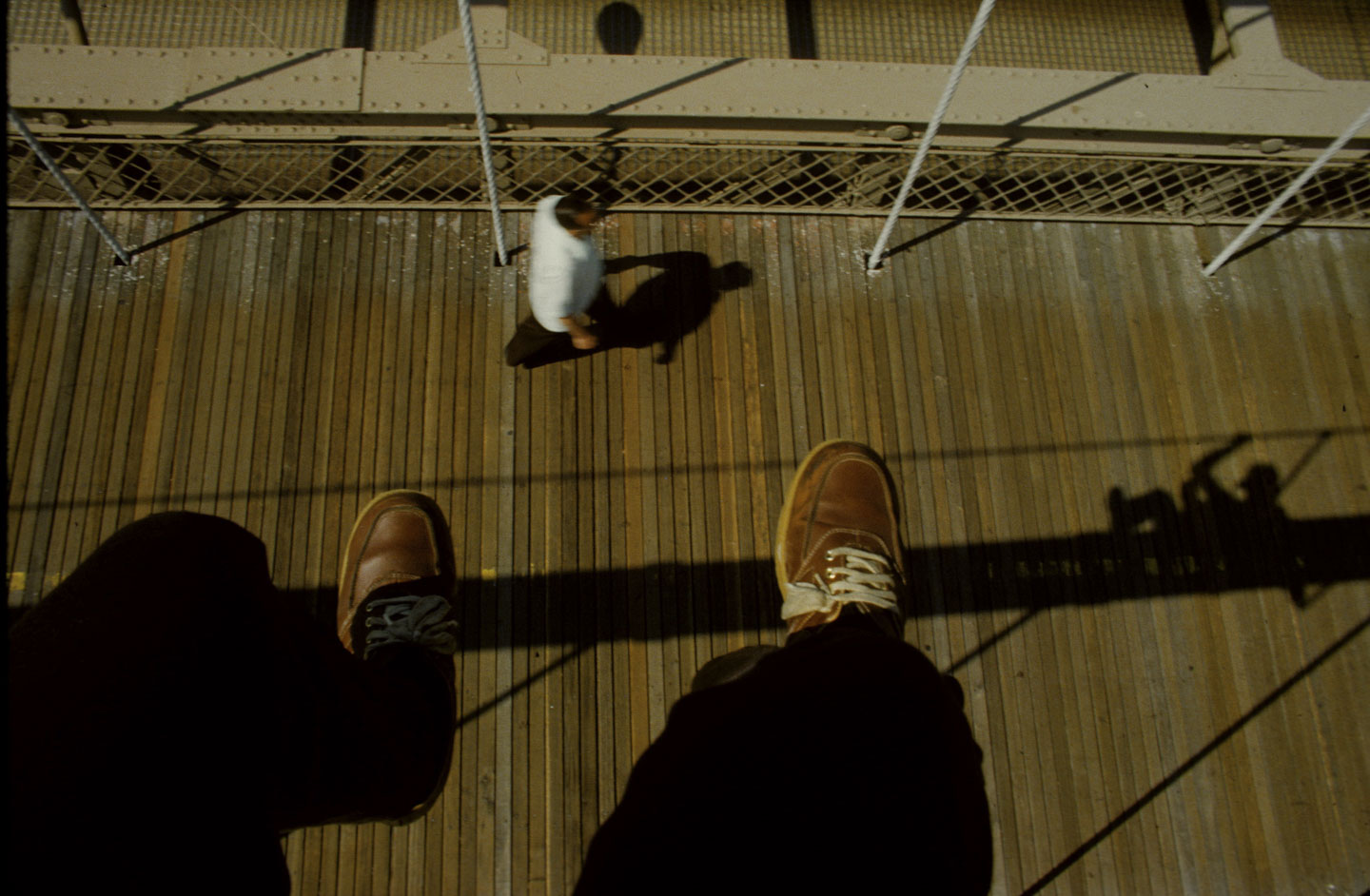
Brooklyn Bridge 11 / 27
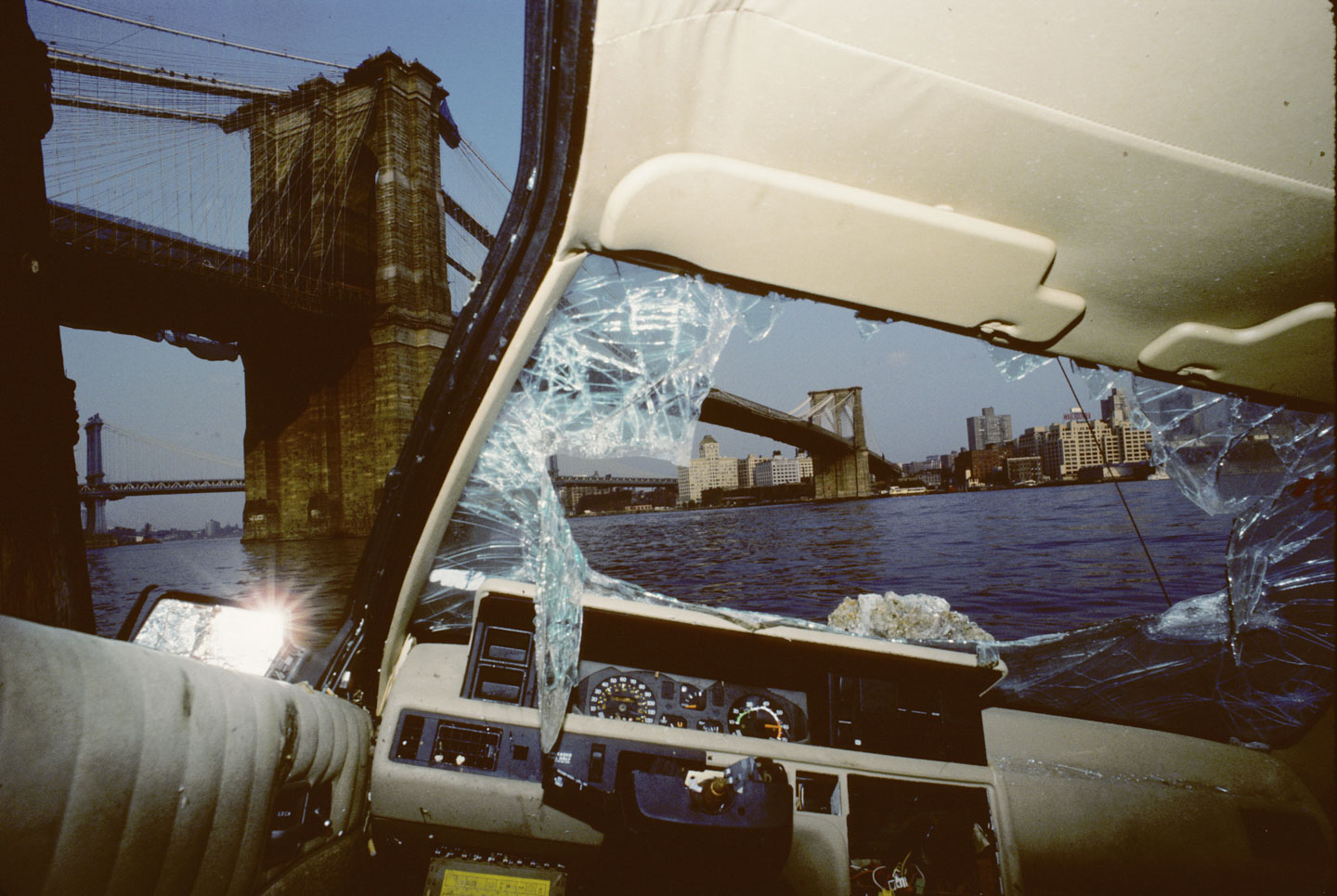
Brooklyn Bridge 162 / 27
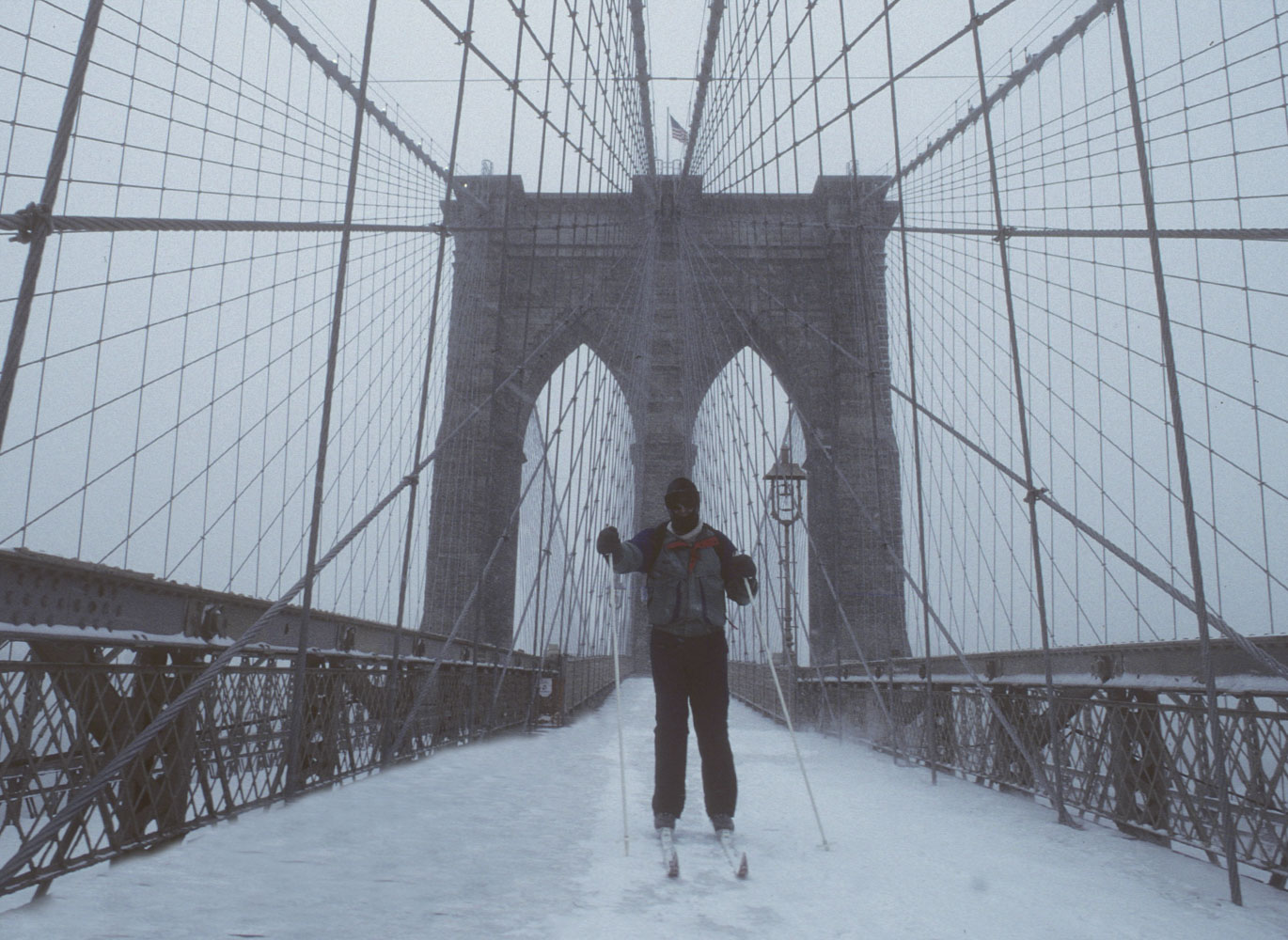
Brooklyn Bridge 653 / 27
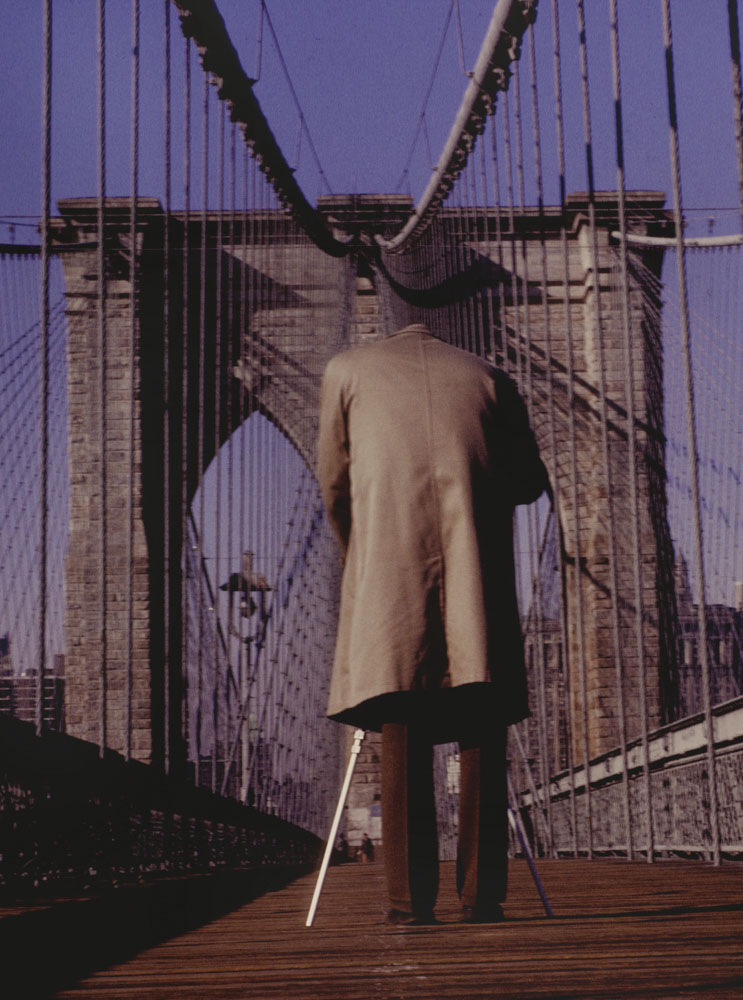
Brooklyn Bridge 1194 / 27
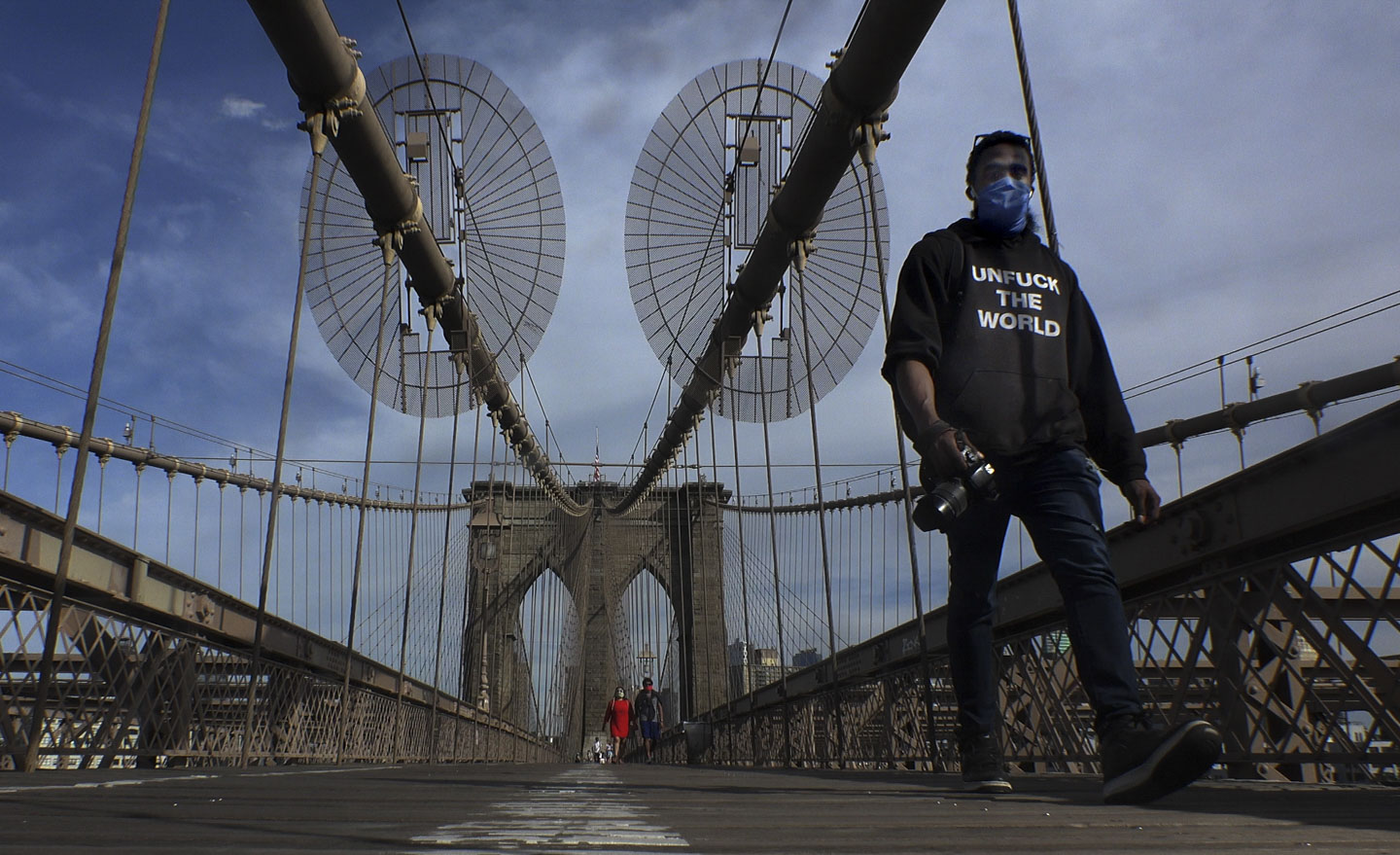
Brooklyn Bridge 1265 / 27
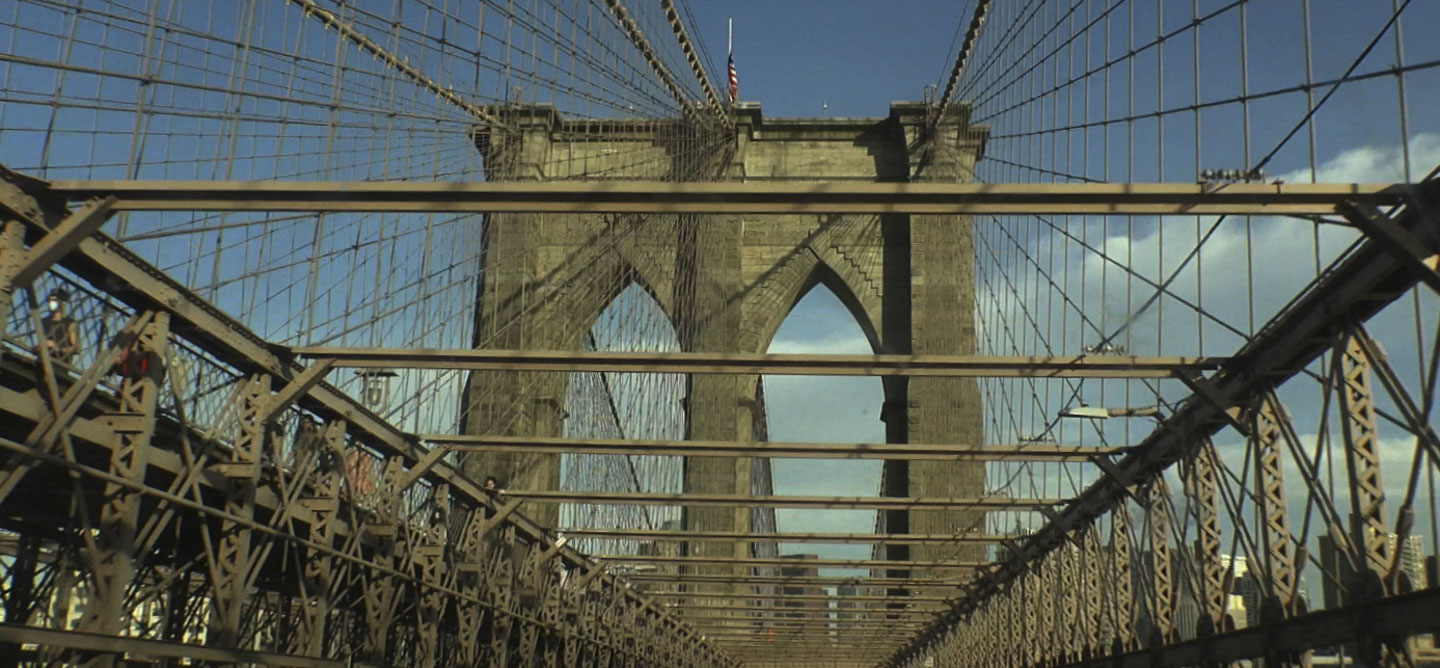
Brooklyn Bridge 1376 / 27
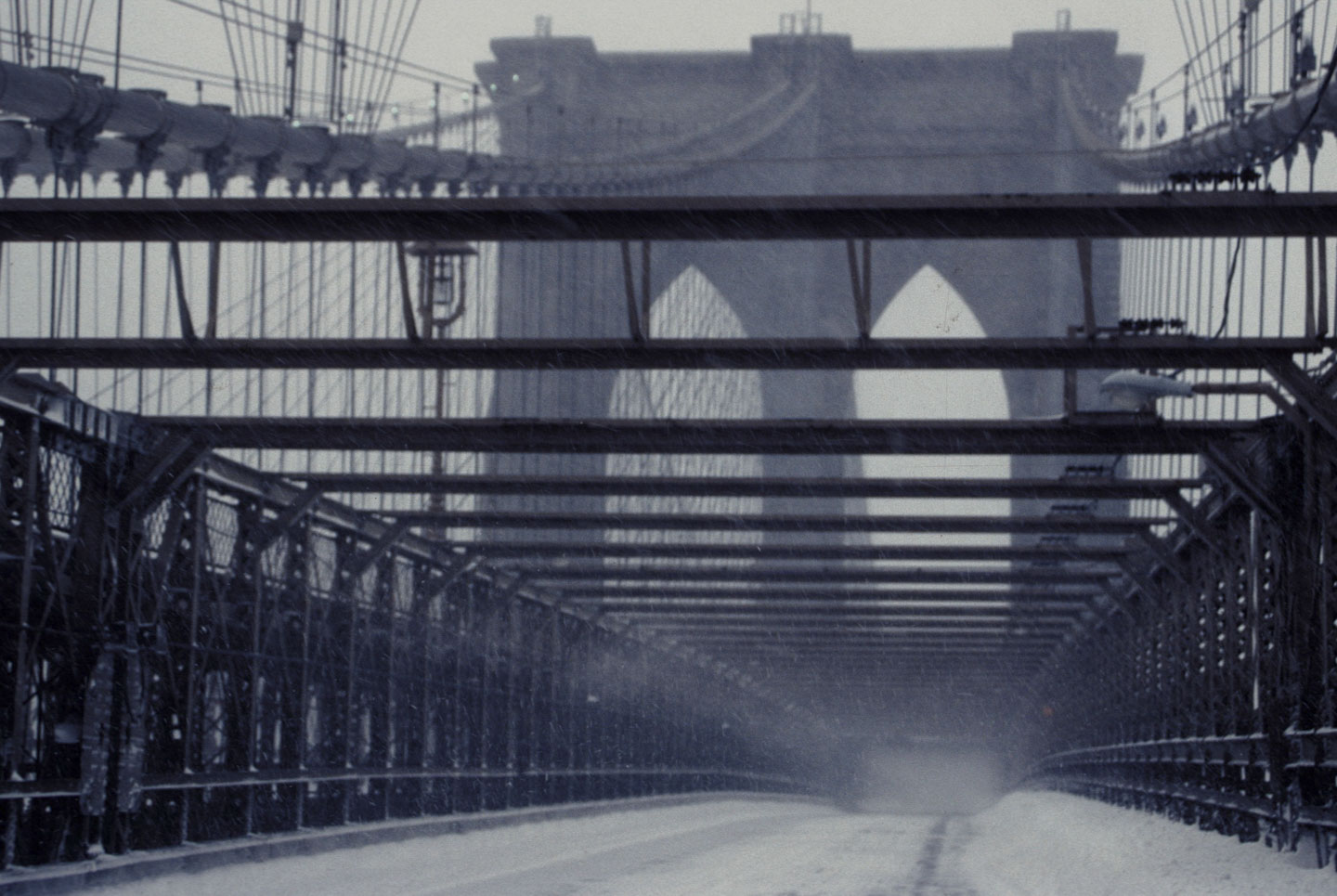
NY Bridges 37 / 27
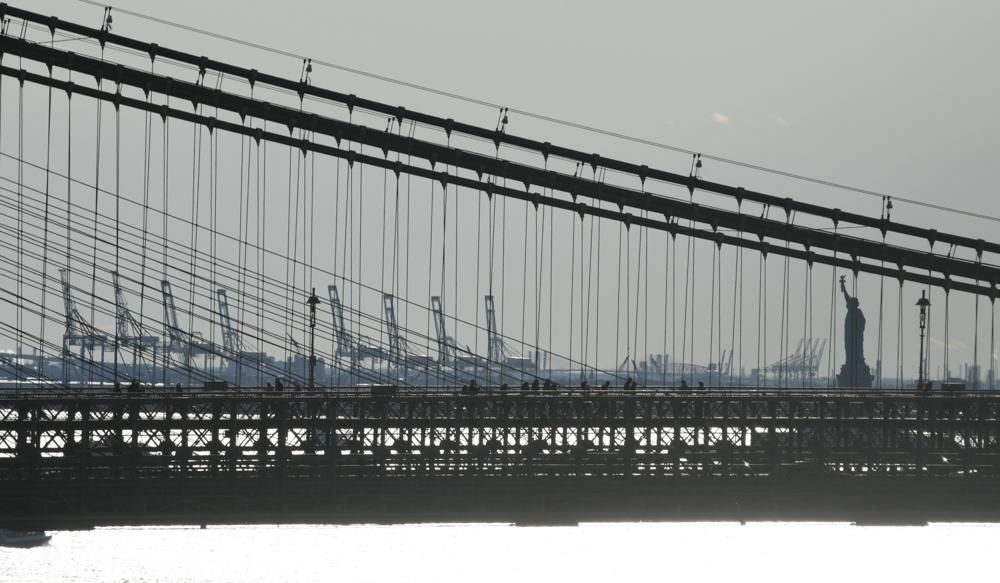
Brooklyn Bridge 2058 / 27
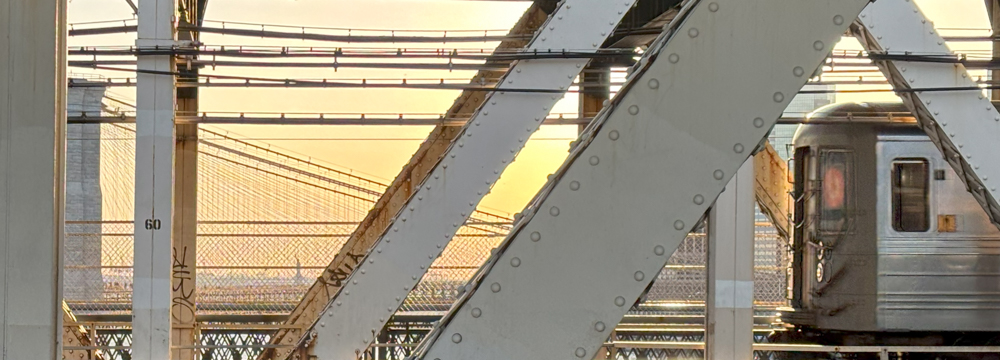
Brooklyn Bridge 2099 / 27

Brooklyn Bridge 20210 / 27
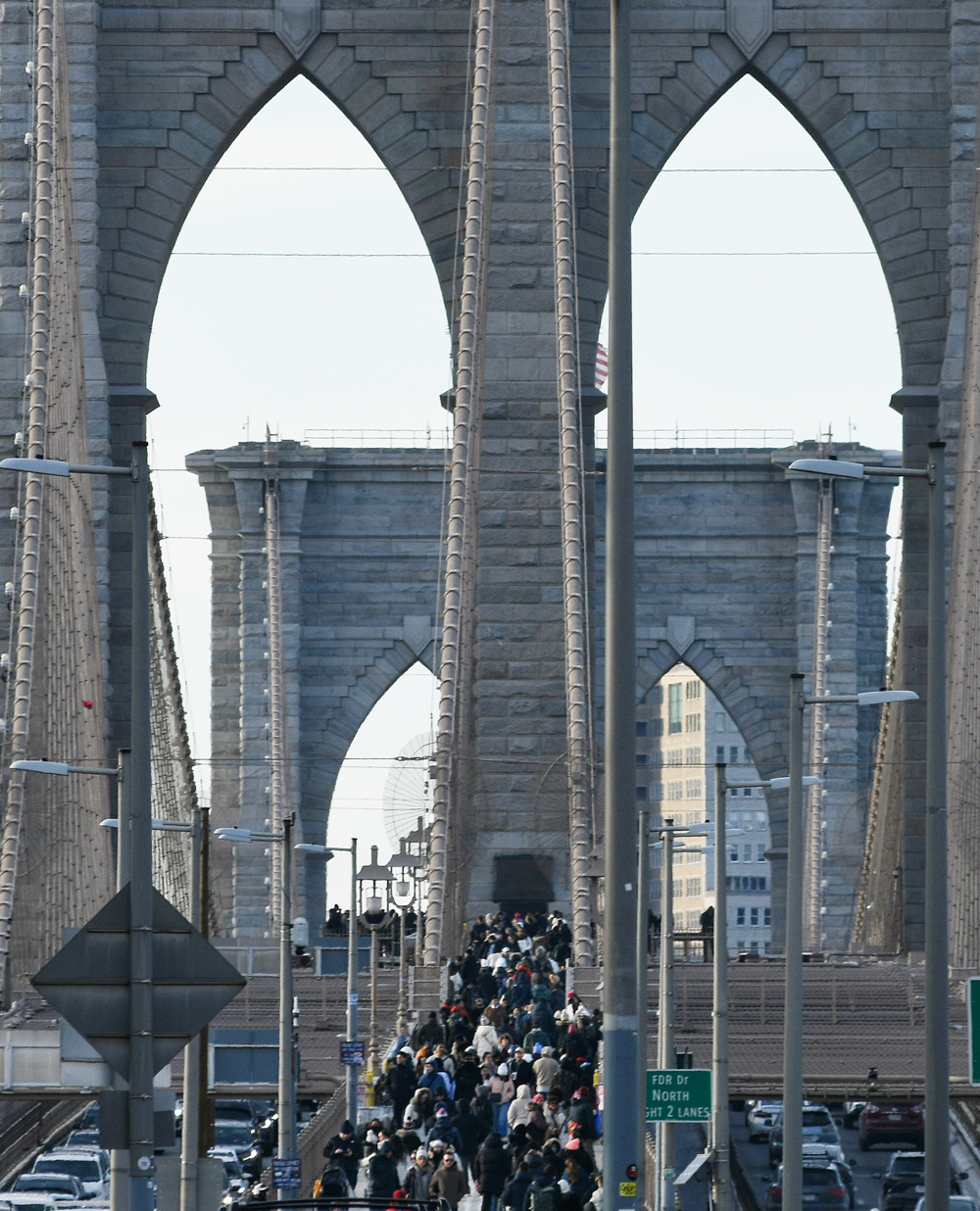
Brooklyn Bridge 19411 / 27
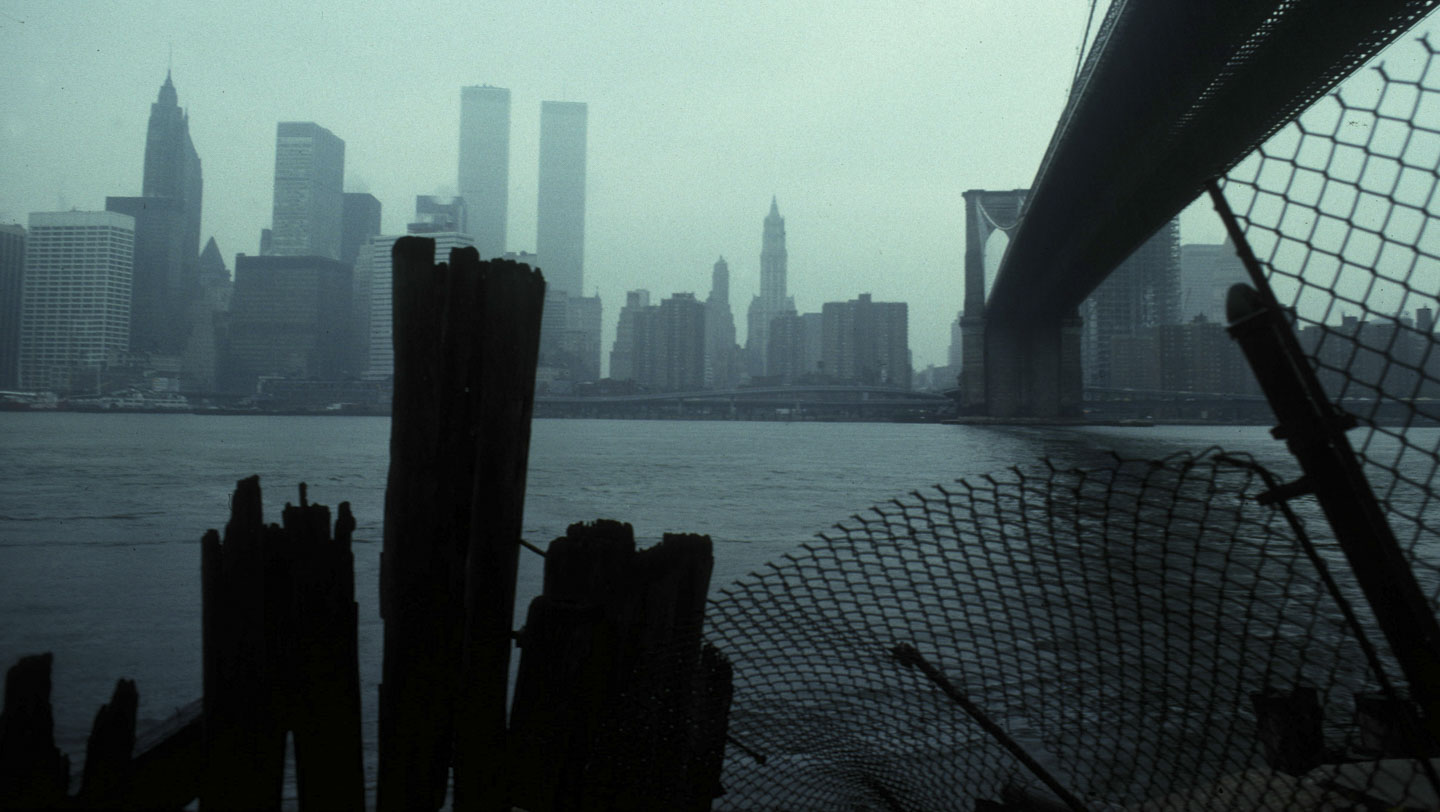
Brooklyn Bridge 10512 / 27
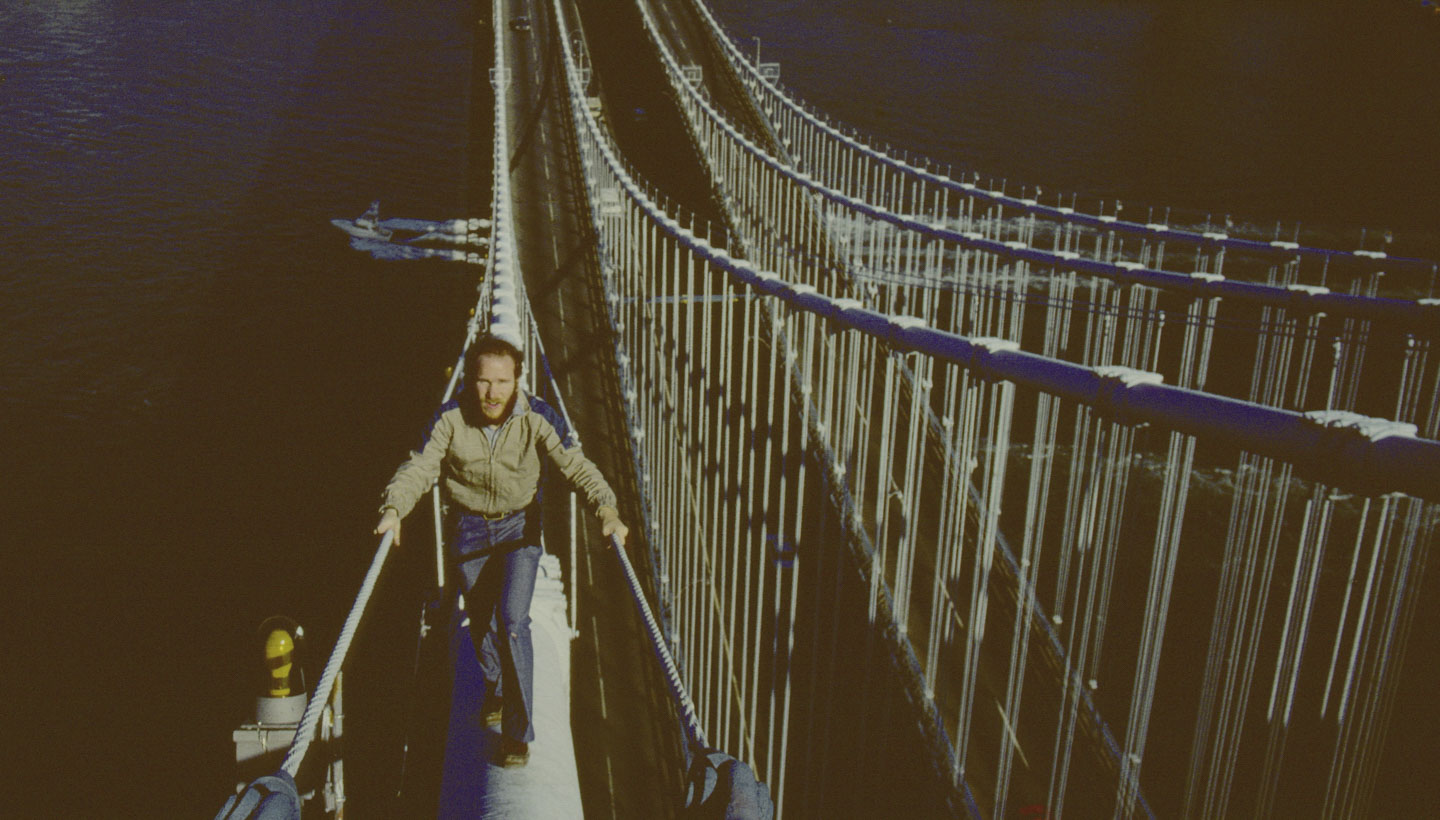
Manhattan Bridge 1013 / 27
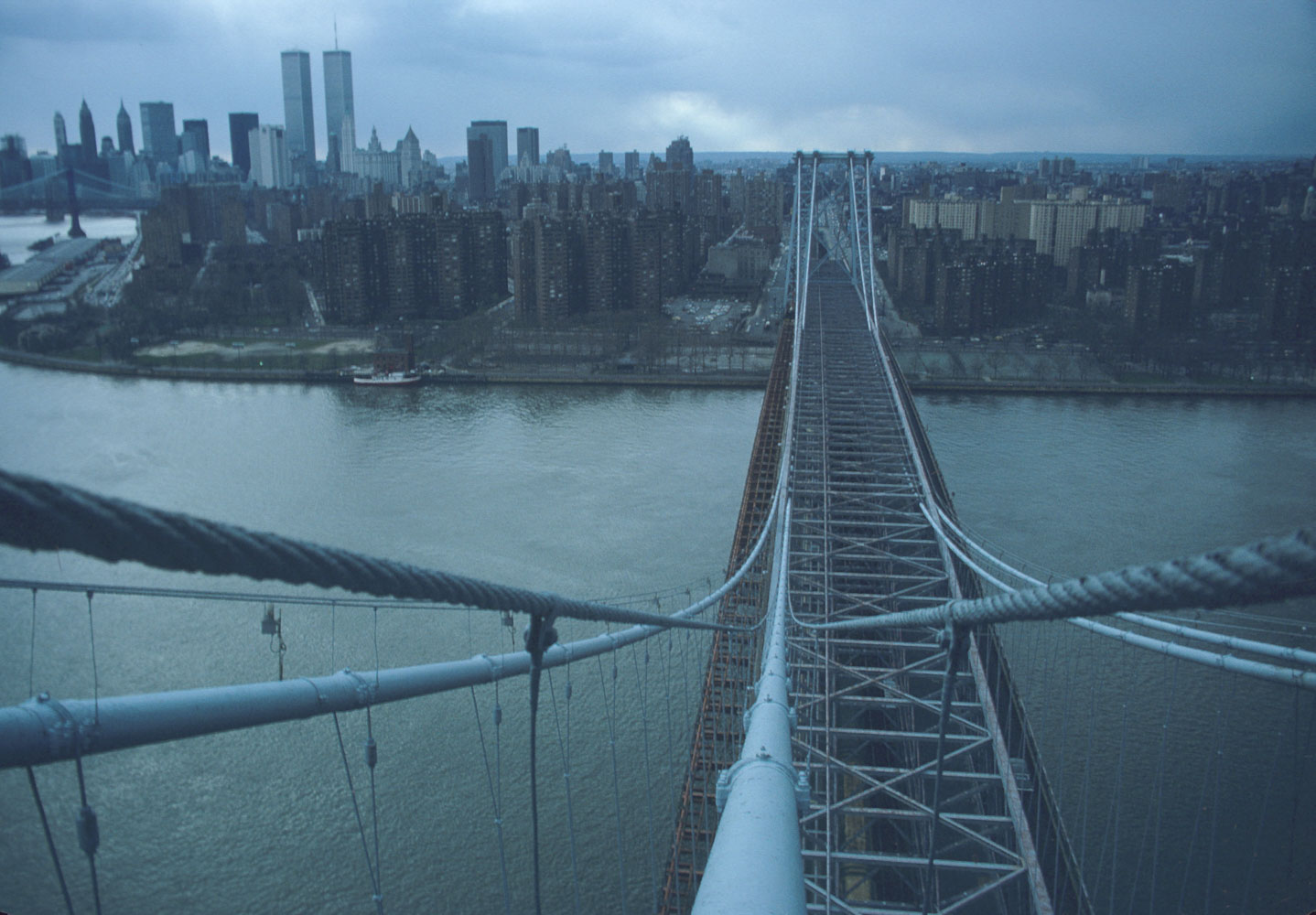
Williamsburg Bridge + WTC14 / 27
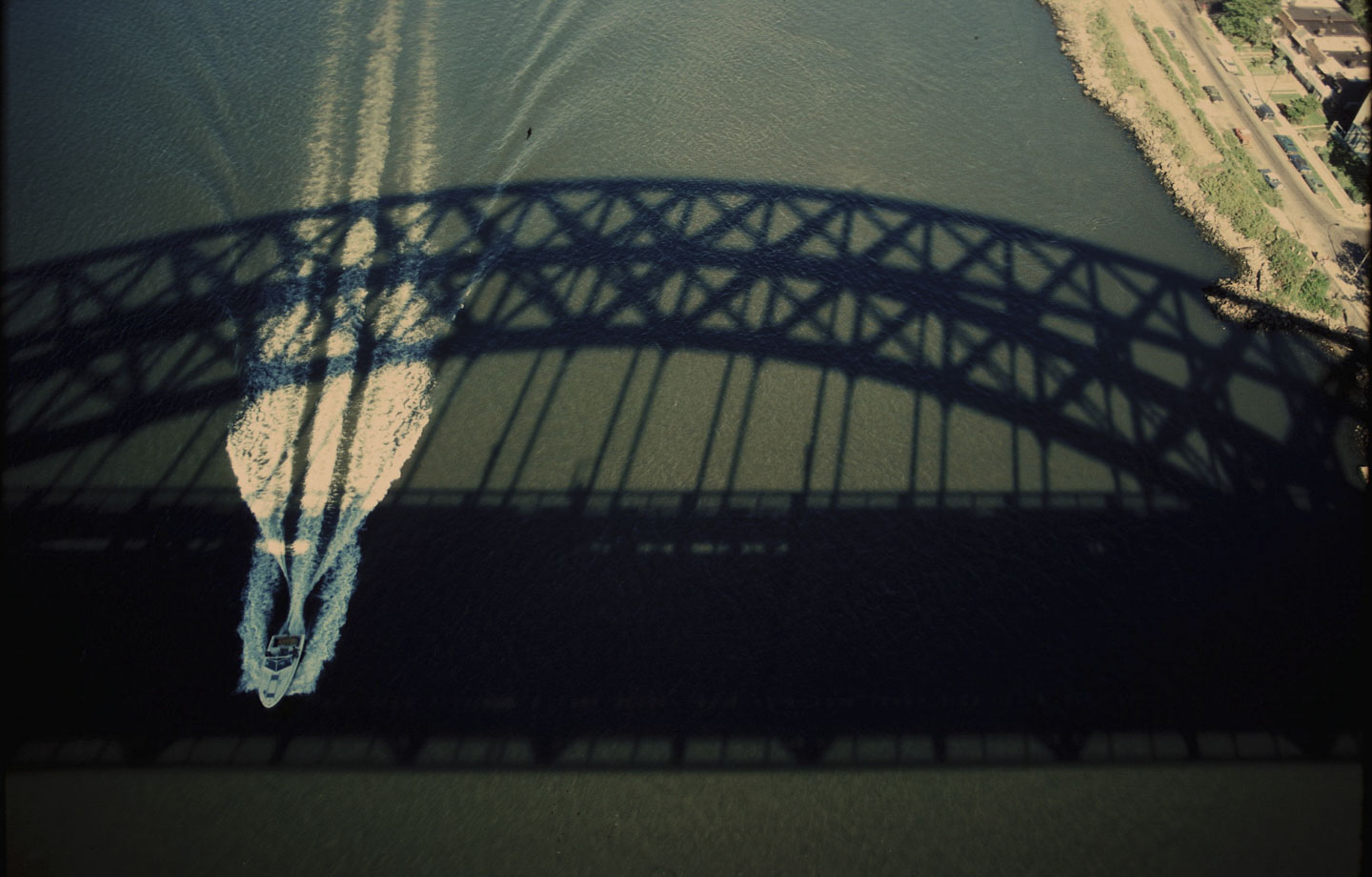
NY Bridges 815 / 27
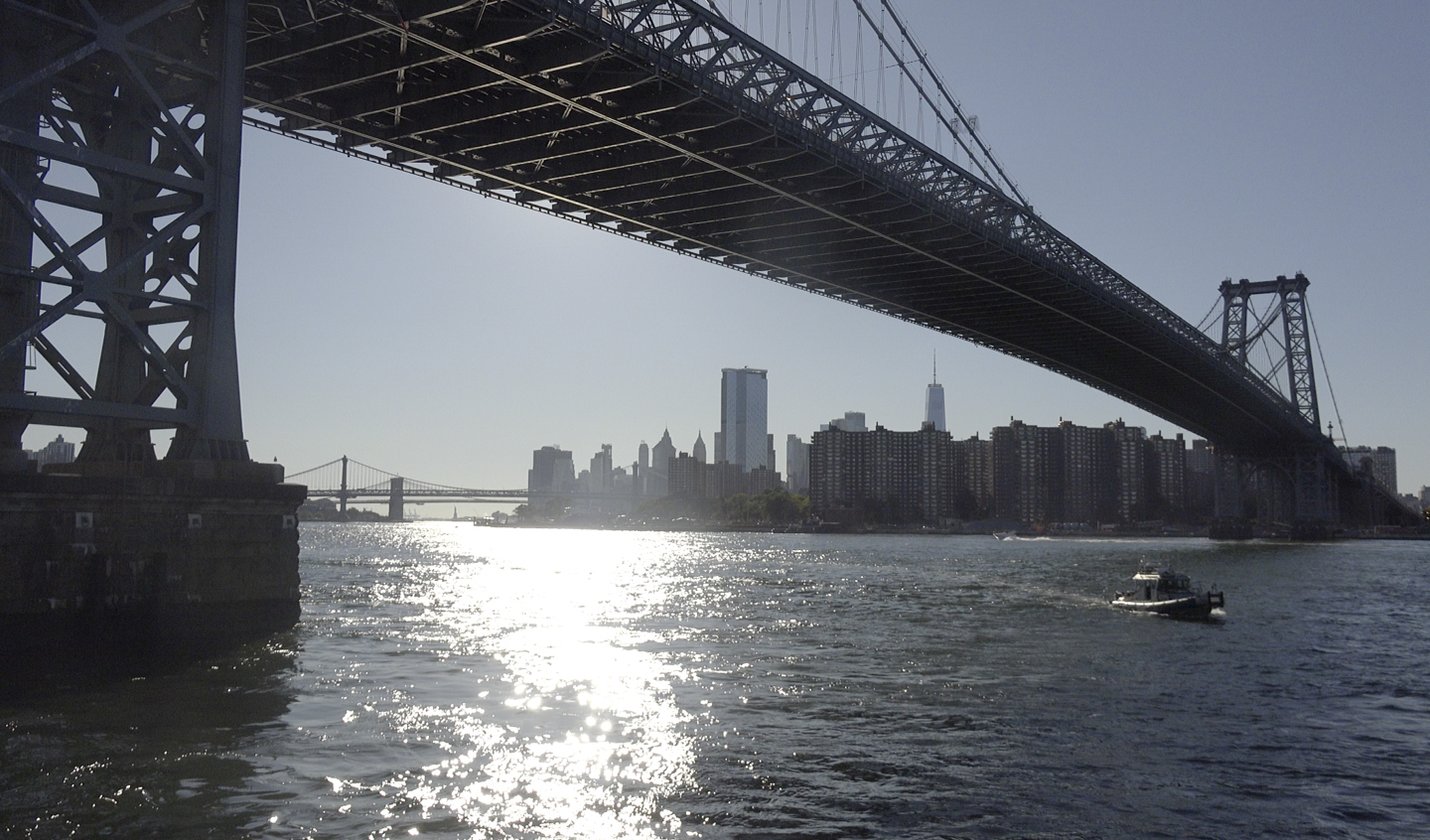
Williamsburg Bridge 3516 / 27
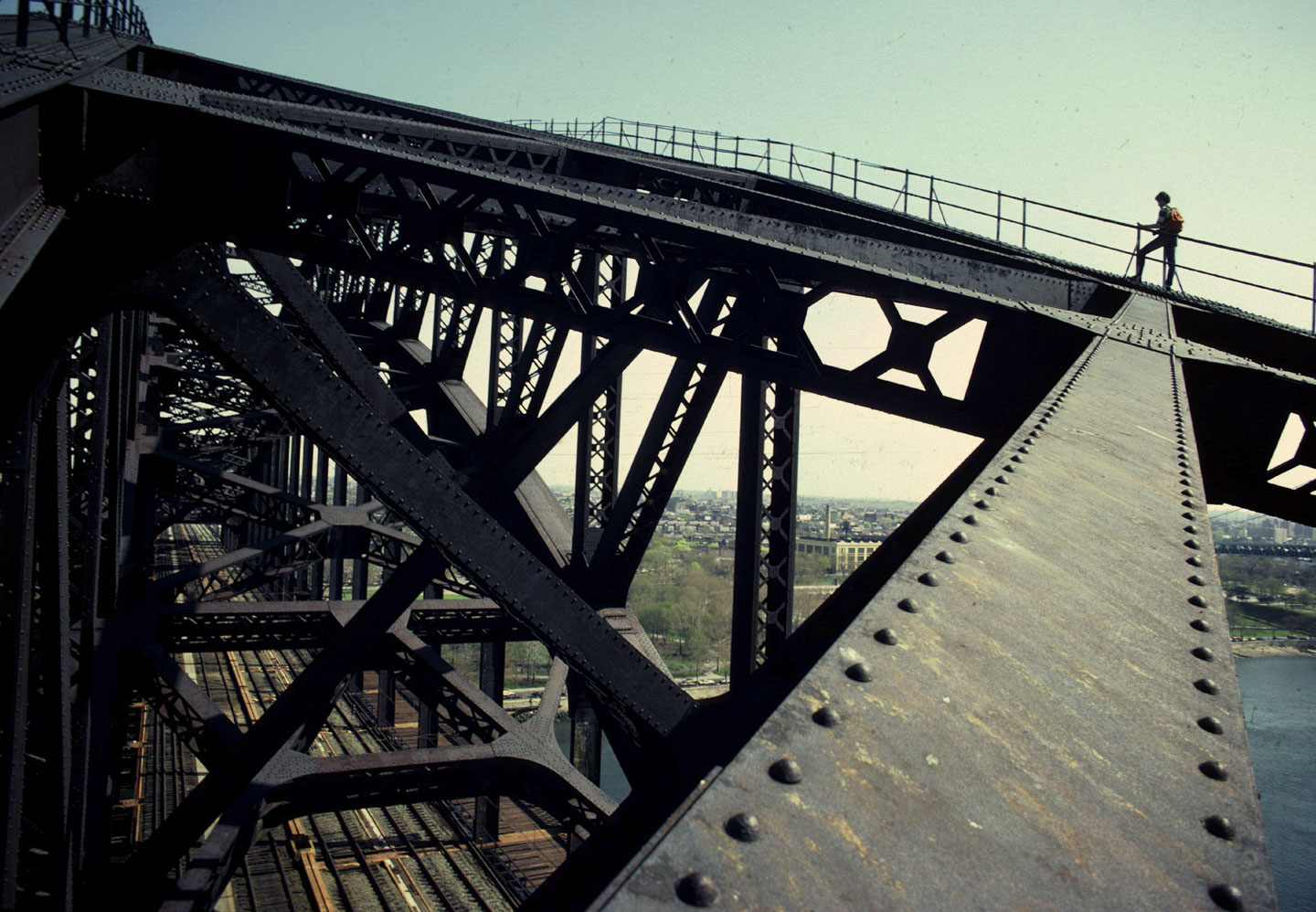
Hell Gate Bridge - On the Arch17 / 27
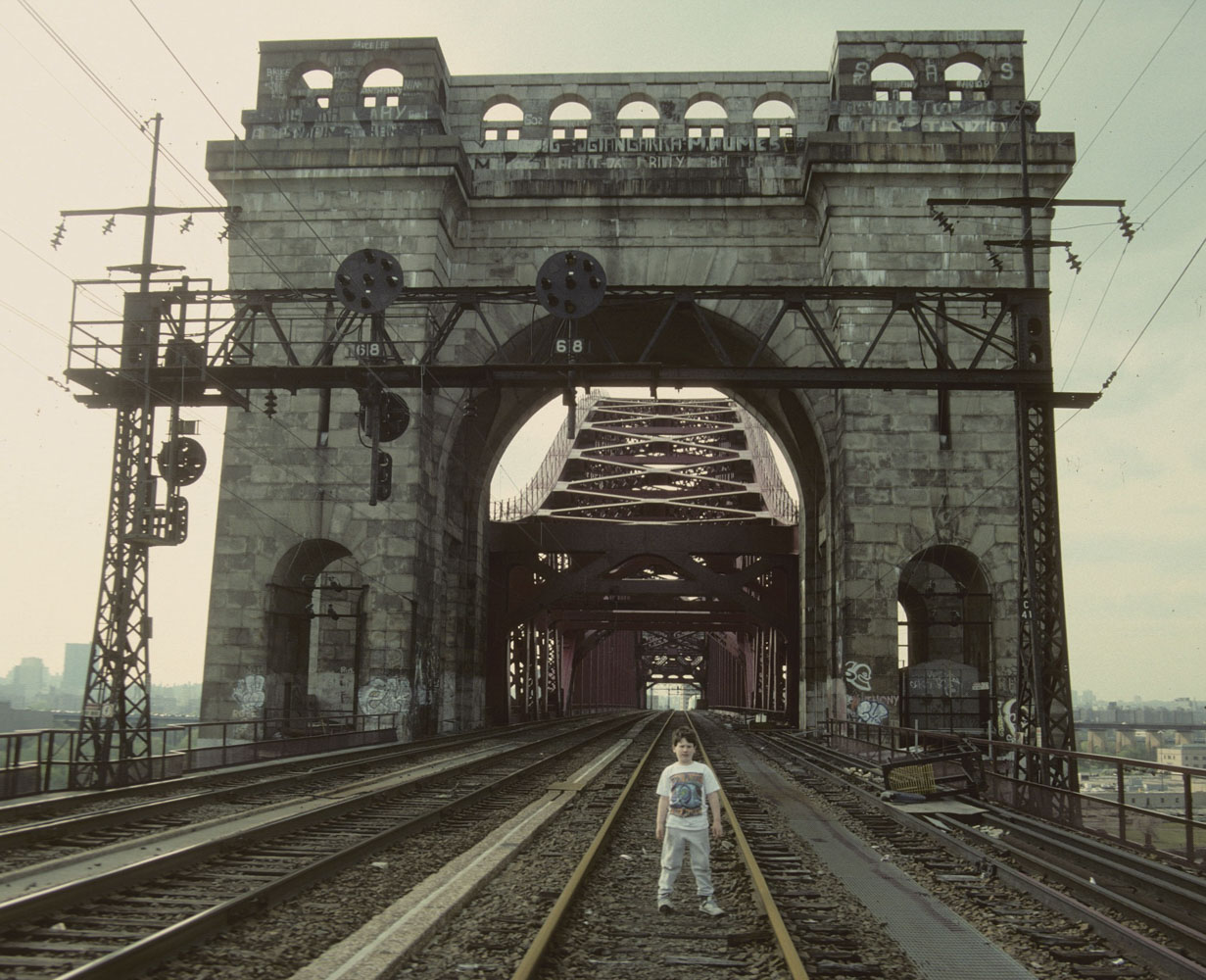
Hell Gate Bridge 2018 / 27
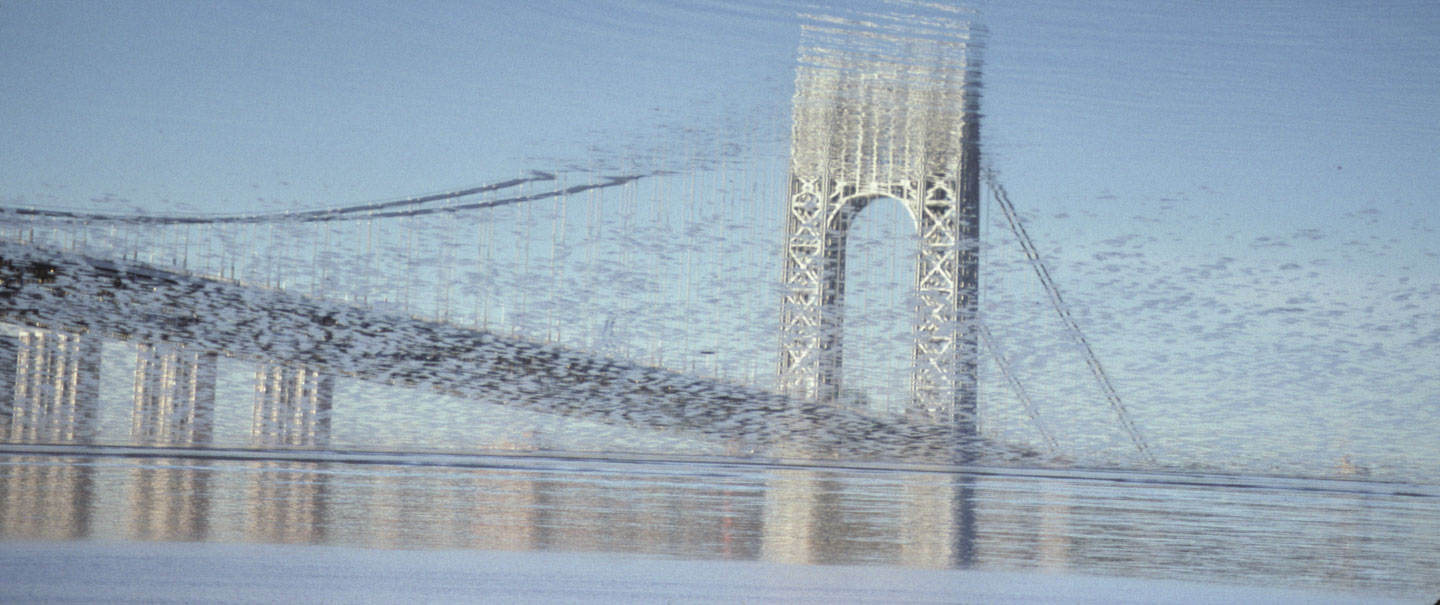
George Washington Bridge 5819 / 27
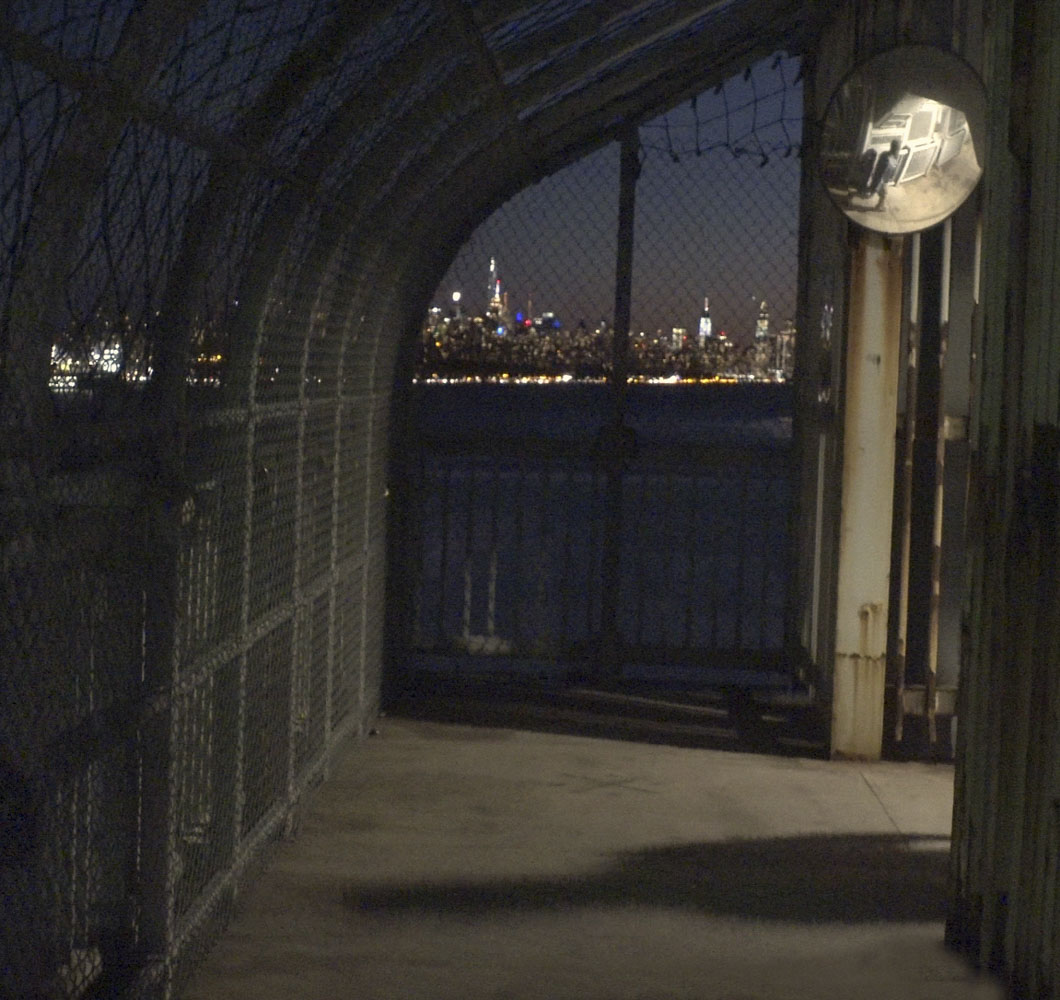
George Washington Bridge 12320 / 27
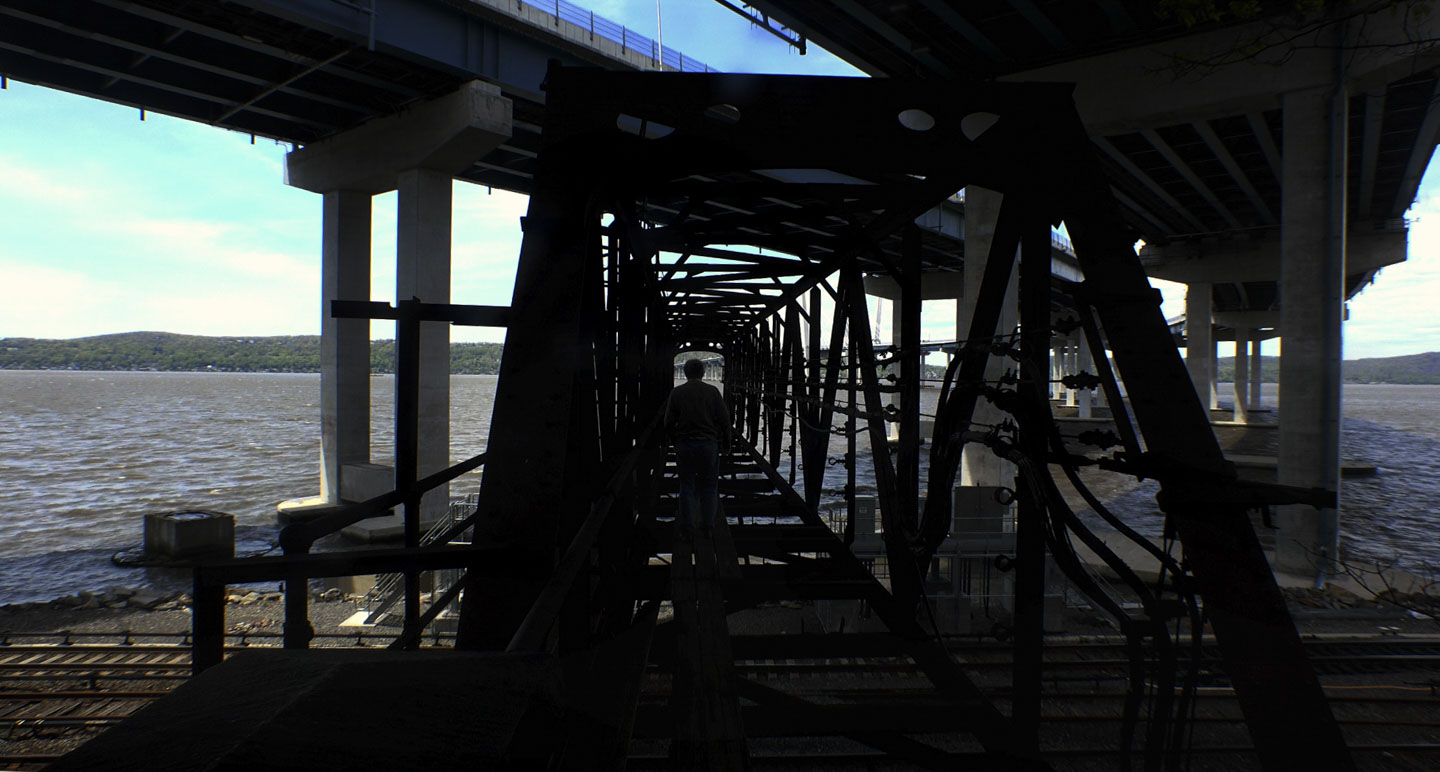
Cuomo Bridge 1221 / 27

Bear Mountain Bridge 2222 / 27
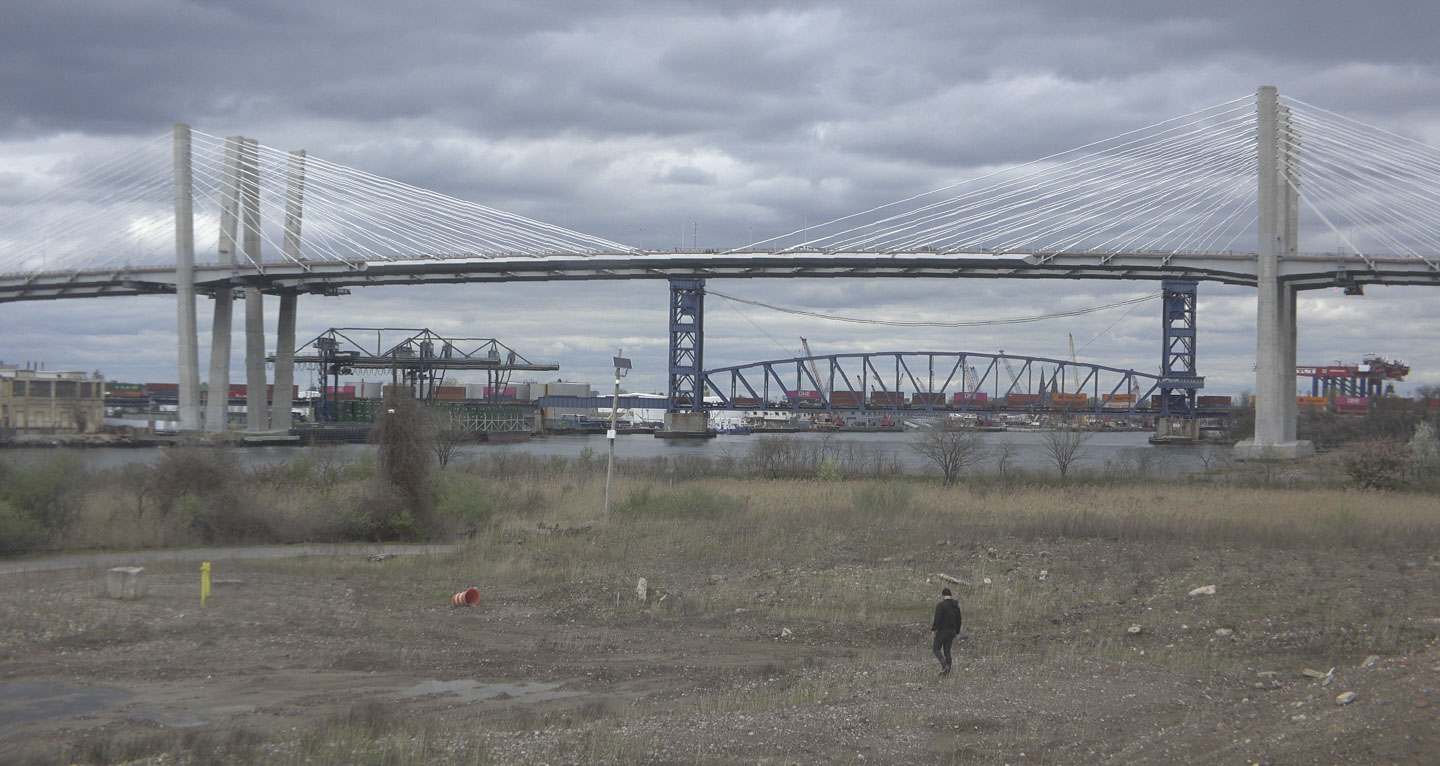
Goethels Bridge 2523 / 27
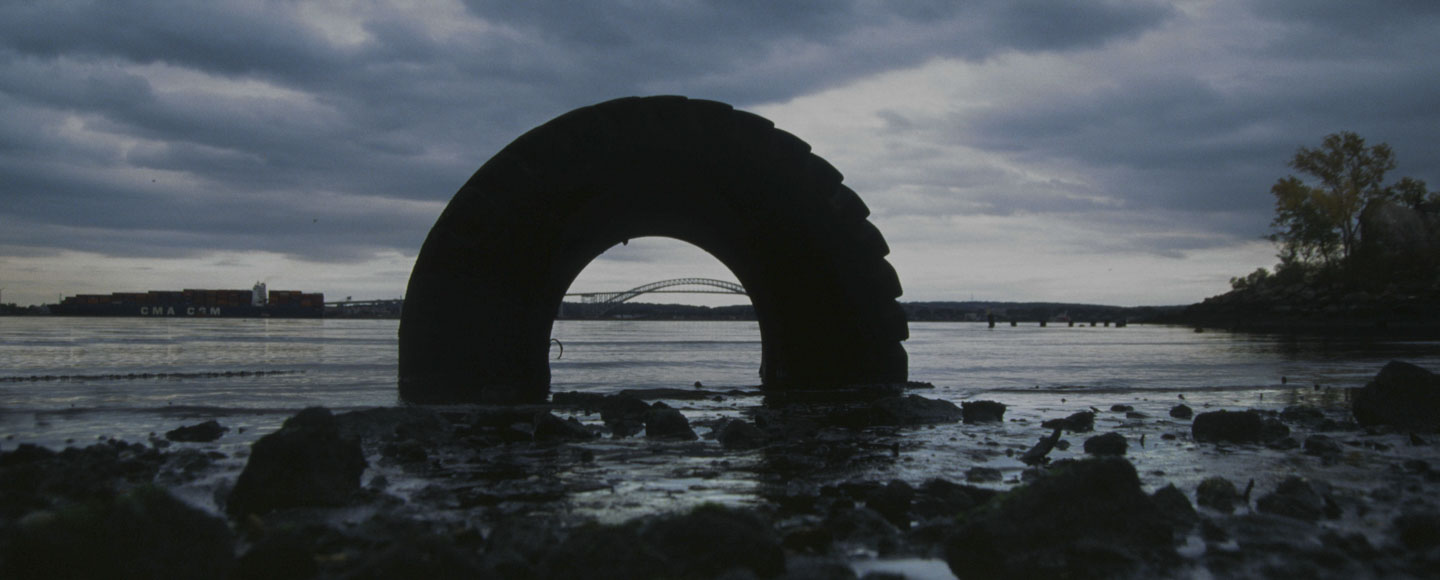
Newark Bay 524 / 27
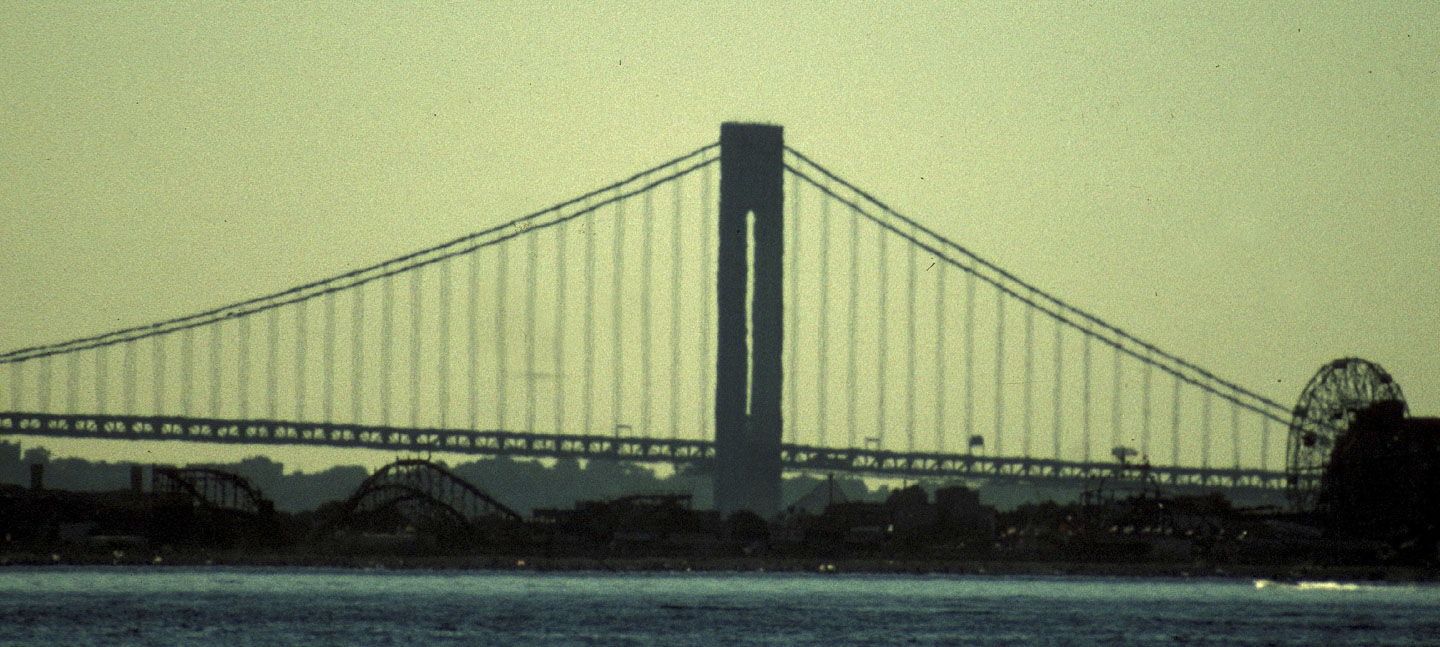
Verrazano Bridge 7325 / 27
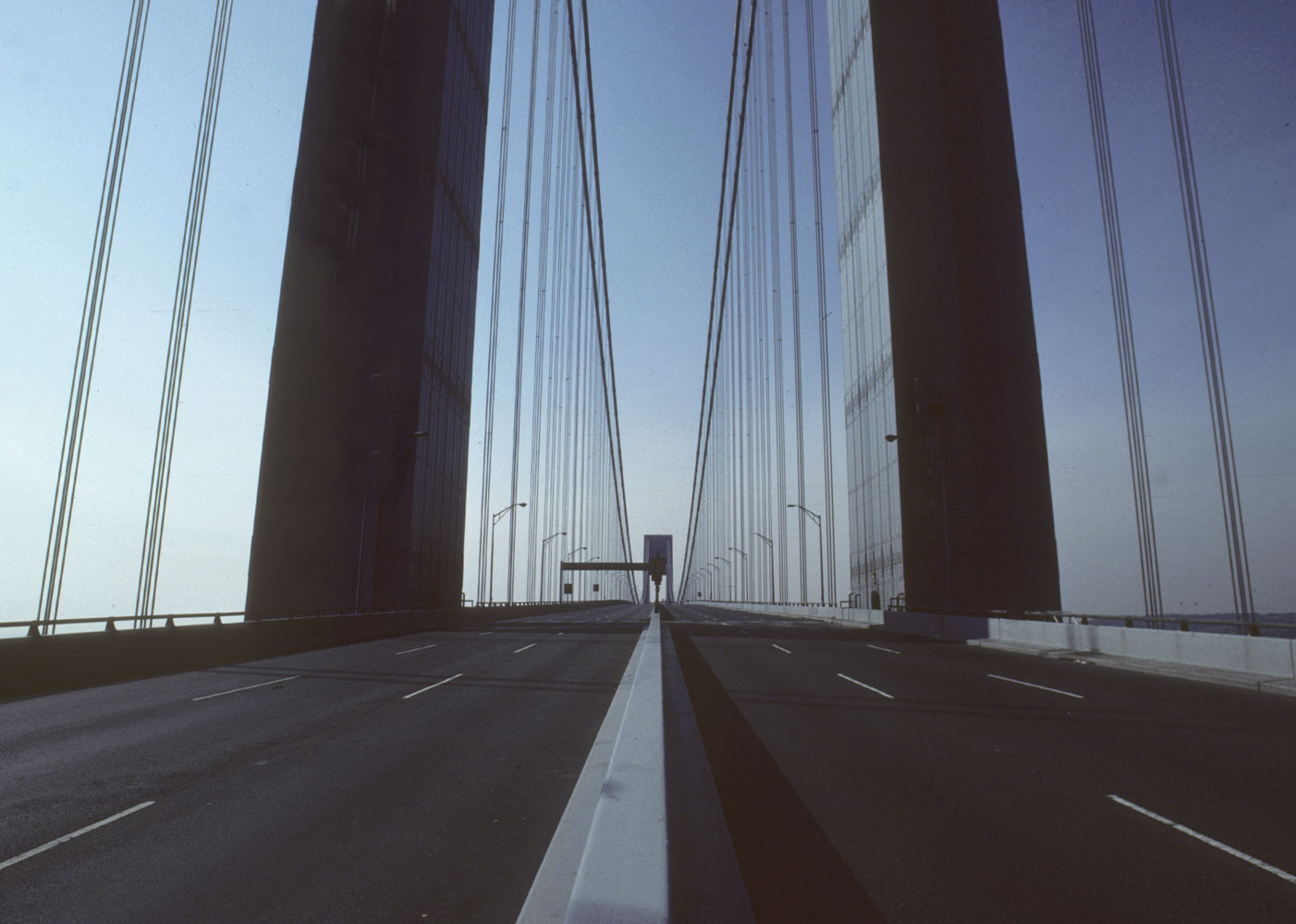
Verrazano Bridge 6726 / 27
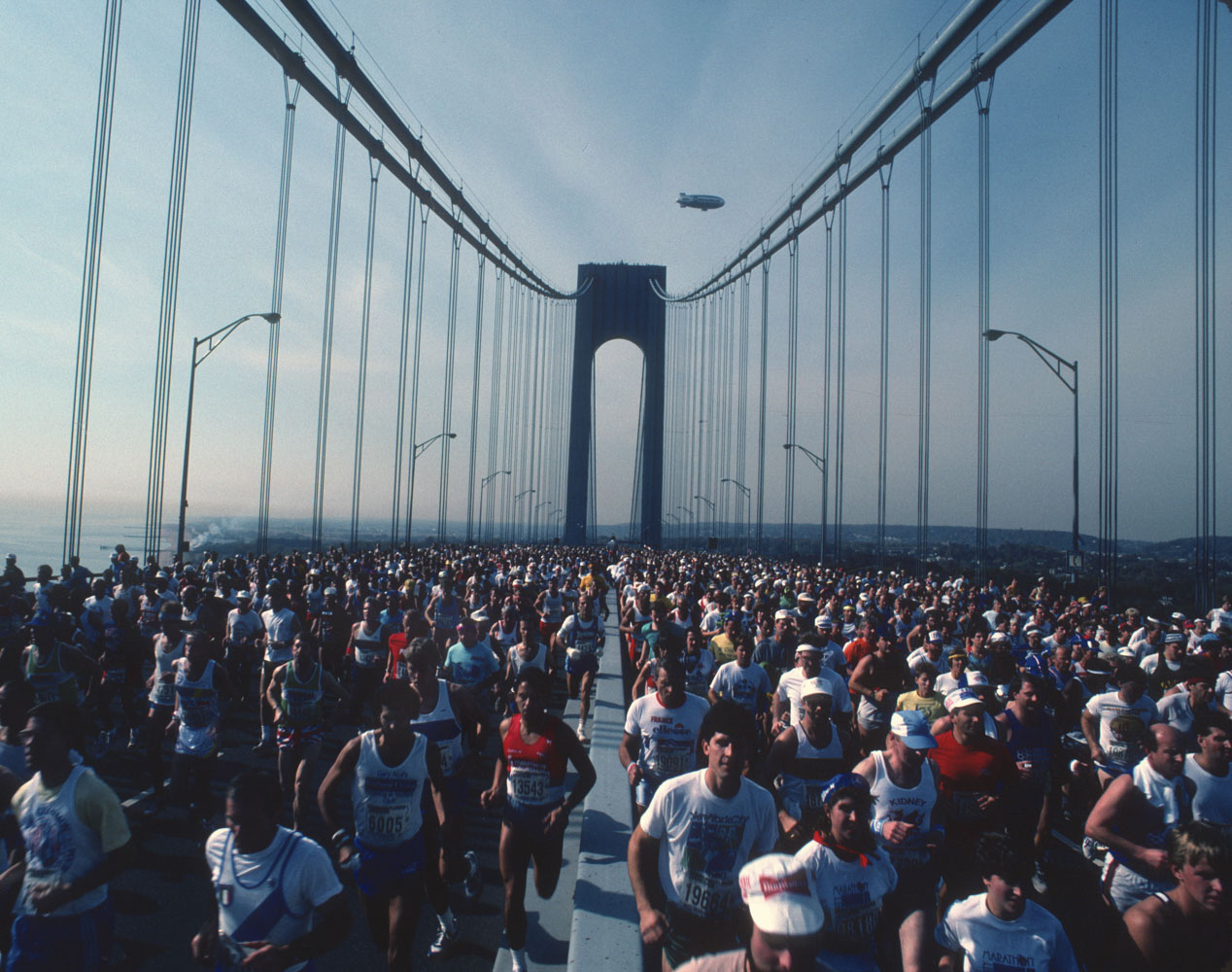
Verrazano Bridge 10527 / 27
BACK TO TOP